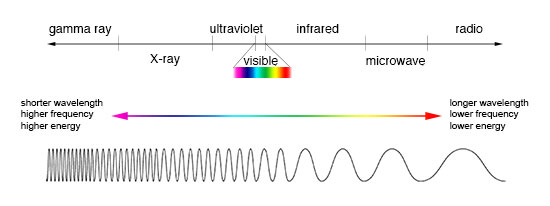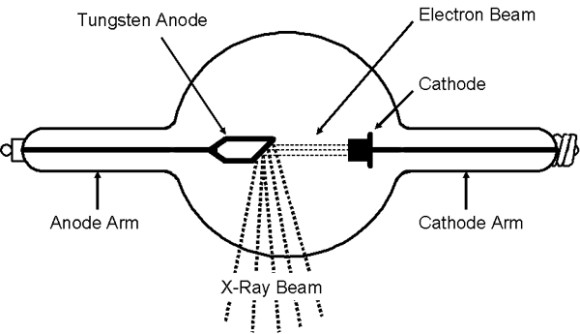X-rays have been around for quite a while now… Well, they have been around for 13.8 billion years, which is the age of the universe. But we were made aware of them in 1895 thanks to Wilhelm Röntgen, a brilliant scientist, who discovered their existence in his lab in Germany.
Although naturally present in nature as a form of light, X-rays can now be created artificially. Special generators are able to accelerate electrons to incredible speed, creating a powerful beam of radiation capable of going through the air, human tissue, walls, etc.
X-rays can be produced in two types of radiation: characteristic or bremsstrahlung. The former happens when a high energy electron collides with an electron inside the atoms of certain metals, resulting in a release of energy characterized by X-ray emission. Bremsstrahlung radiations, on the other hand, are generated when an electron is slowed down by the nucleus of an atom. The energy lost in the process is then converted into X-rays.
Bremsstrahlung radiations represent about 80% of X-rays generated in the universe. Artificially speaking there exists a few ways of producing bremsstrahlung radiation. Using X-rays tubes is one of them.
In this article, we will focus on two specific mechanisms used in portable X-ray systems: the “Pulsed” and “Constant Potential” methods. The main difference between these two mechanisms resides in the way the X-ray generator provides and emits electrons.
In the case of pulsed sources, a battery provides power to a transformer which generates very high energy electrons and stores them in a capacitor. When the capacitor is charged, a spark is generated inside the X-ray tube, allowing the electrons to reach a receptor, called the “anode”, which generate X-rays.
Unfortunately, Pulsed generators do not allow the operator to regulate the energy of the electrons (kV) and the amount of electrons generated (mA). However, the number of pulses and their frequency can be modified.
With constant potential generators, such as the CP120B from Teledyne ICM, power is also provided thanks to a battery integrated inside the generator. Similar to pulsed generators, a transformer charges a capacitor to a very high voltage. The difference lays in the fact that the capacitor is directly supplying the X-ray tube with direct voltage instead of releasing small sparks. A constant direct current will drastically reduce the amount of time needed to penetrate objects such as pipes, steel plates, engine parts, etc.
Another main difference between pulsed and constant potential sources is related to the engineering of the cathode, the negatively charged electrode by which electrons enter the x-ray tube. Constant Potential sources use a cathode which includes a filament, whose temperature controls the flow of electrons to the anode. Unlike with pulsed generators, this technology very precisely focalizes the electron beam, which reduces the size of the area emitting X-rays, called “focal spot”. The smaller the focal spot, the sharper the image.
Unlike pulsed sources, constant potential units allow the operator to regulate the Kilovolts and Milliamps to customize his or her inspections in order to accommodate his or her needs. Indeed, more kV will result in higher energy X-rays, which will issue deeper penetration, while less energetic electrons will give a better contrast but longer exposures. On the other hand, more mA will reduce exposure time but generate more heat.
The last main difference between these two sources is their lifetime expectation. Pulsed X-ray generators, which have an estimated lifetime of 100,000 pulsed due to a degraded cathode, are able to produce approximately 10,000 images. In comparison, constant potential generators have an estimated lifetime of roughly 10,000 hours which translates into about 7,200,000 images.
When it comes to X-ray sources, both systems have their advantages and drawbacks. It is not always easy to choose a solution over another. Your decision should be based on the application for which the X-ray generator is intended, your budget, and the compatibility with the detection technology being used.




